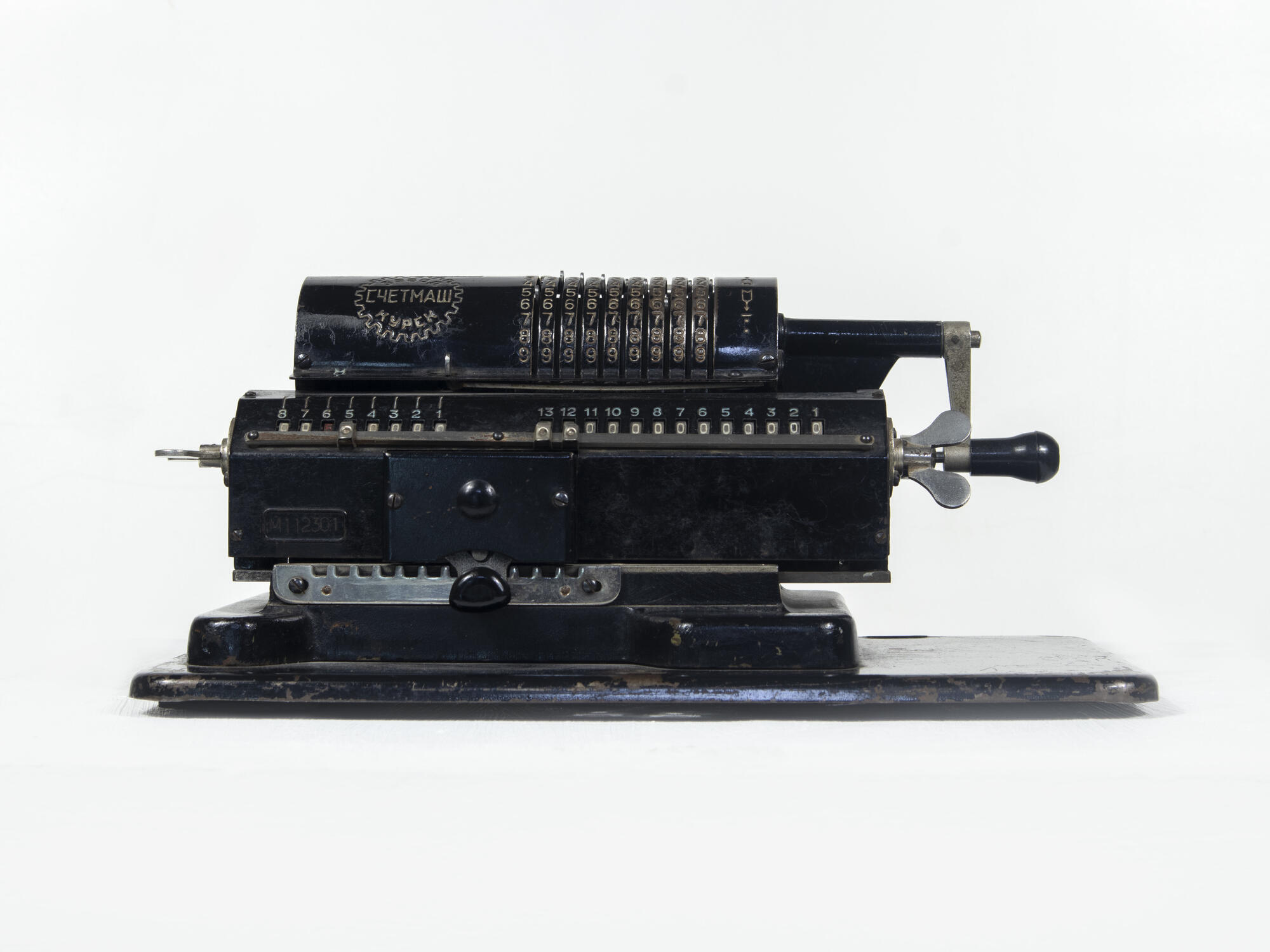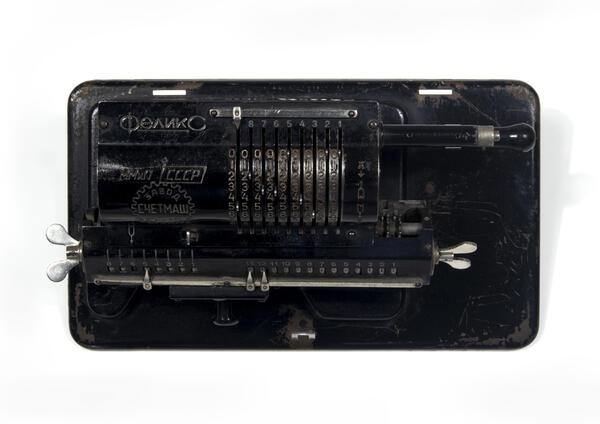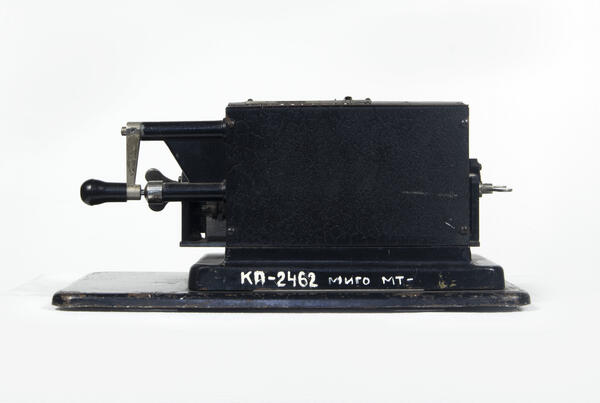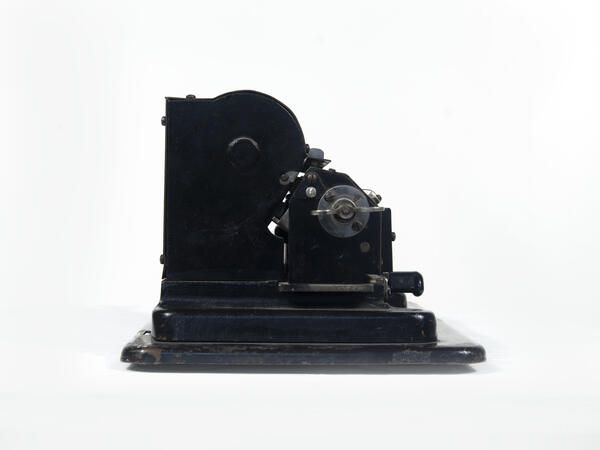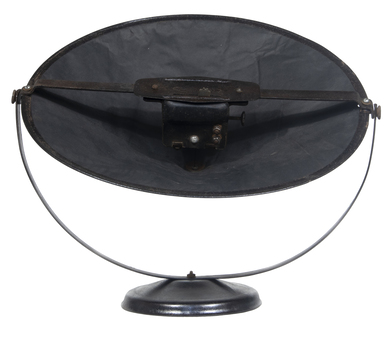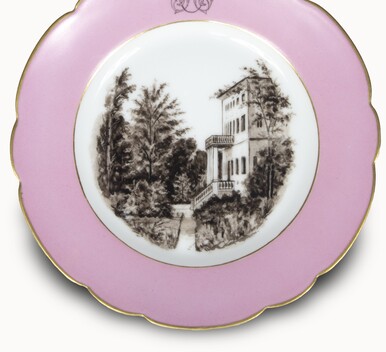A metal Felix arithmometer was a mechanical calculating machine, weighing five kilograms, which, before the advent of the calculator, helped to perform the complex operations of addition, subtraction, multiplication and division. To calculate on an arithmometer, one had to rotate the cylinder and slide the carriage for ones, tens, hundreds and larger numbers. The right side of the machine has an addition and subtraction crank handle, which can be turned toward the operator for addition and away — for subtraction. On the front of the instrument there are two levers to reset the numbers entered and the result of the operation.
The principle of the arithmometer is based on the internal rotation of pinwheels. With constant practice, the user’s movements became automatic. The numbers to be divided were set up in the same way as the column division, and the total was shown on the result line. If by subtraction or division a negative number was obtained, a bell was rung in the arithmometer. In this case, the last operation had to be canceled by turning the crank handle in the opposite direction.
The work on developing the arithmometer continued from the 16th to the 19th century. The first automatic arithmometer designed by Pafnuty Chebyshev marked an important stage; one of those machines was donated to the Musée des Arts et Métiers. In 1890, mass production of the Odhner arithmometer, named after the Russian-Swedish inventor, began in Russia. After the revolution, Felix arithmometers, which owed its name to the Communist Party figure Felix Dzerzhinsky, were mass-produced in the USSR. By 1978, several million devices in more than 20 modifications had been produced. They were used by scientists, secretaries, economists; children at school were taught how to use them.
The Felix machine from the collection of the Museum of the History of Obninsk was assembled at the SCHETMASH plant in Kursk. The decision to build the plant was made a week after the victory in the Great Patriotic War. Felix arithmometer was the first device produced in the new factory, and SCHETMASH was one of the largest manufacturers of electronic calculating equipment in the Soviet Union for 30 years. Today, the plant produces cash register equipment and automobile electronics.
The principle of the arithmometer is based on the internal rotation of pinwheels. With constant practice, the user’s movements became automatic. The numbers to be divided were set up in the same way as the column division, and the total was shown on the result line. If by subtraction or division a negative number was obtained, a bell was rung in the arithmometer. In this case, the last operation had to be canceled by turning the crank handle in the opposite direction.
The work on developing the arithmometer continued from the 16th to the 19th century. The first automatic arithmometer designed by Pafnuty Chebyshev marked an important stage; one of those machines was donated to the Musée des Arts et Métiers. In 1890, mass production of the Odhner arithmometer, named after the Russian-Swedish inventor, began in Russia. After the revolution, Felix arithmometers, which owed its name to the Communist Party figure Felix Dzerzhinsky, were mass-produced in the USSR. By 1978, several million devices in more than 20 modifications had been produced. They were used by scientists, secretaries, economists; children at school were taught how to use them.
The Felix machine from the collection of the Museum of the History of Obninsk was assembled at the SCHETMASH plant in Kursk. The decision to build the plant was made a week after the victory in the Great Patriotic War. Felix arithmometer was the first device produced in the new factory, and SCHETMASH was one of the largest manufacturers of electronic calculating equipment in the Soviet Union for 30 years. Today, the plant produces cash register equipment and automobile electronics.
